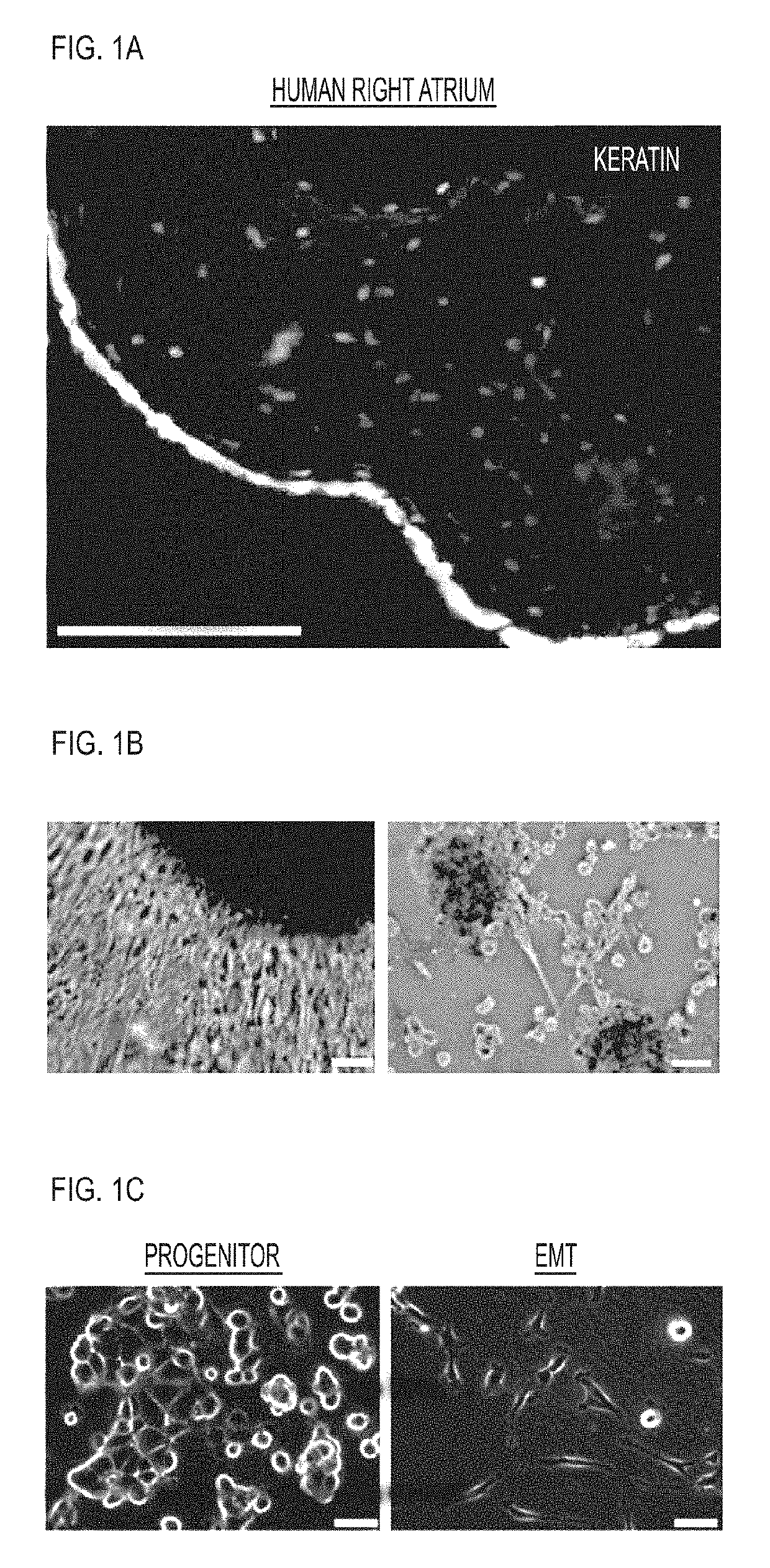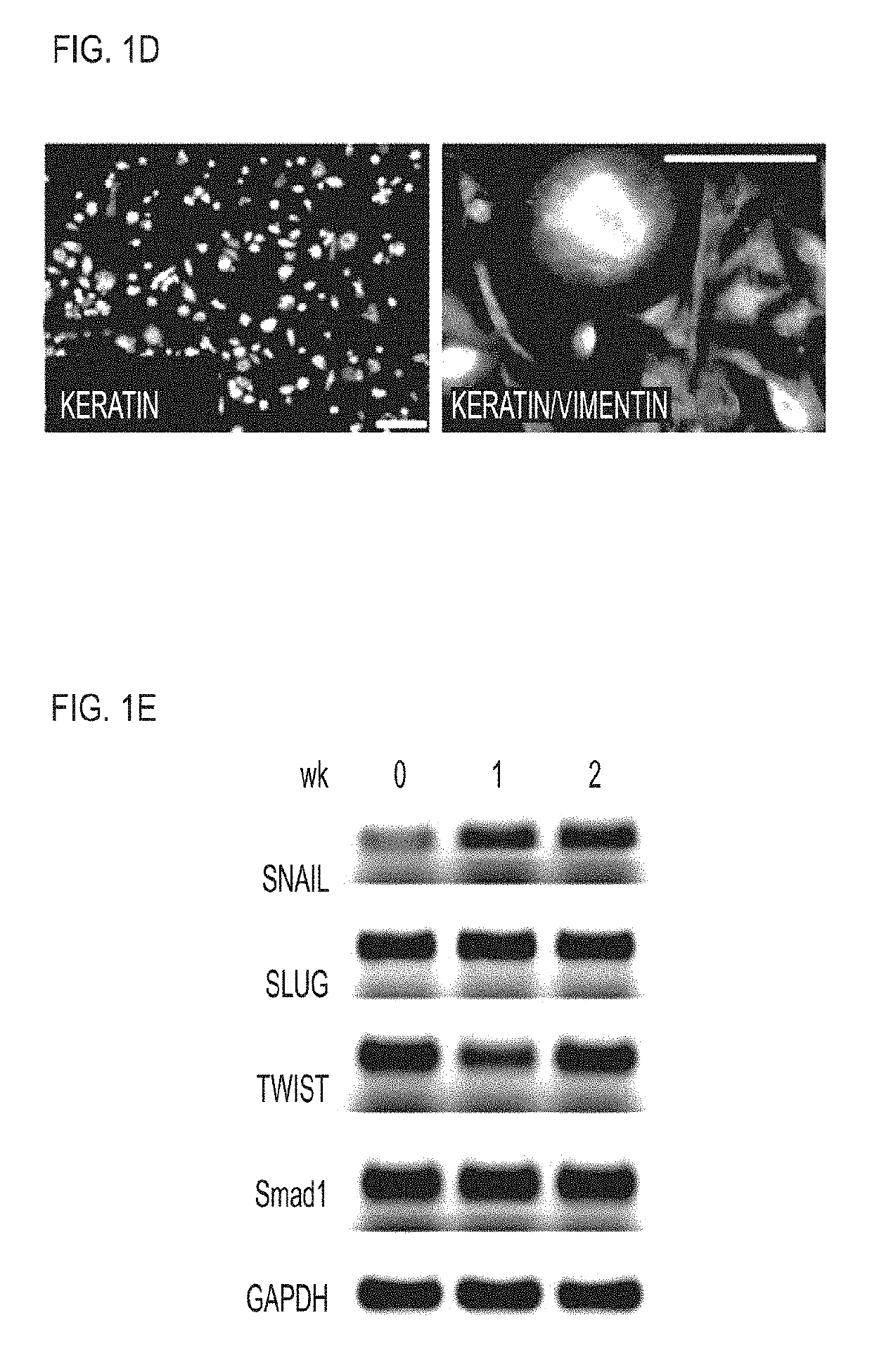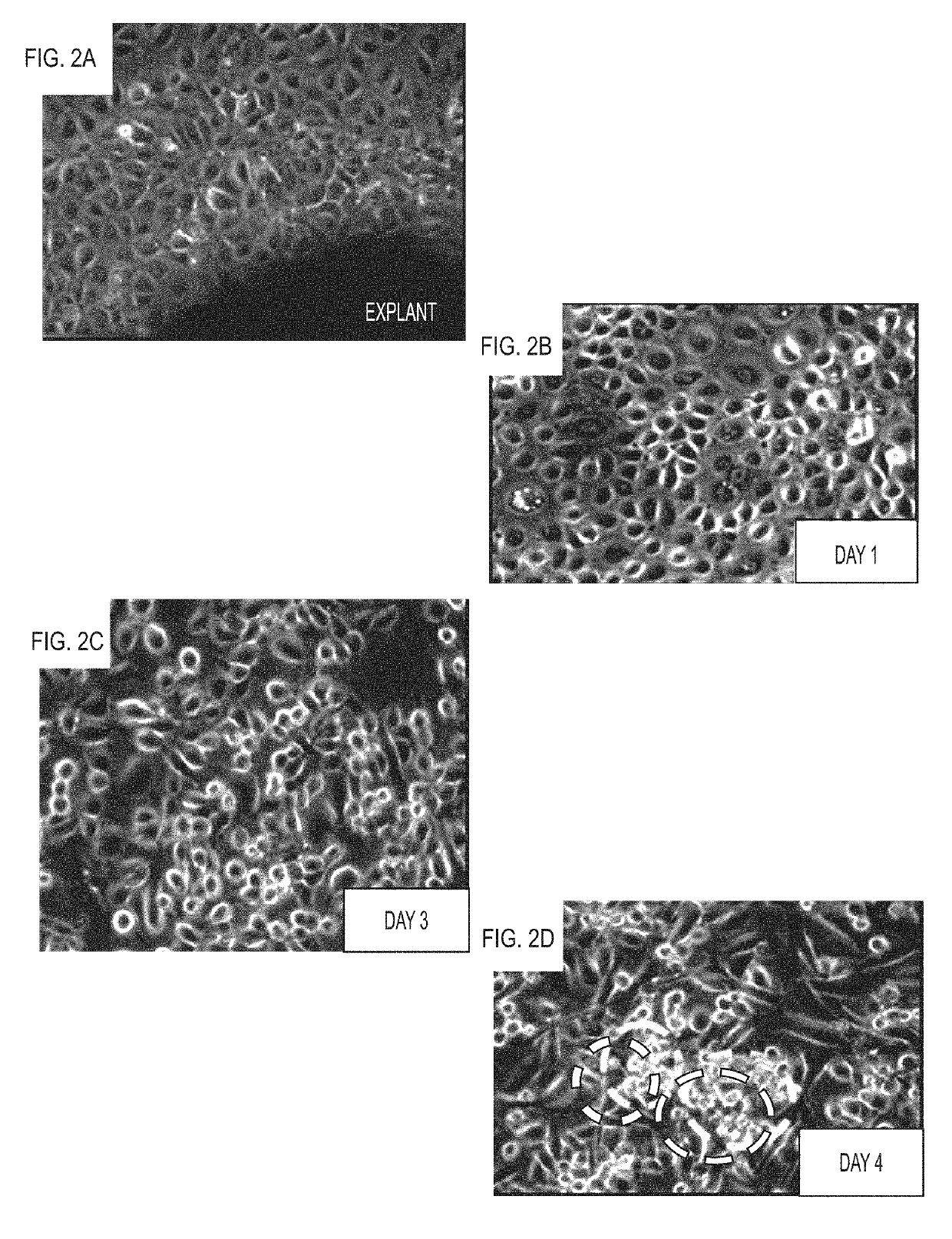Compositions and Methods for Vascular Protection Against Reperfusion Injury After Myocardial Ischemia
a technology of vascular protection and myocardial infarction, which is applied in the direction of drug compositions, peptide sources, peptide/protein ingredients, etc., can solve the problems of re-canalized macroscopic vessels not always leading to improved microvascular perfusion, and the leading cause of death of myocardial infarction, so as to reduce the probability of developing a disorder
- Summary
- Abstract
- Description
- Claims
- Application Information
AI Technical Summary
Benefits of technology
Problems solved by technology
Method used
Image
Examples
examples
[0087]Example 1: Isolation of adult human epicardial progenitor cells and cells undergoing epithelial to mesenchymal transformation into precursor cells.
[0088]The epicardial layer from adult human right atrial heart tissue is a single layer of epithelial cells that stained positive for keratin (epithelial intermediate filament protein, FIG. 1A). Human epicardial cells were isolated from right atrial appendages commonly removed to place a cardiopulmonary bypass cannula as part of cardiac surgery. The cells were successfully isolated from 12 out of 13 donors (Table 1, below).
TABLE 1Table 1. Patient Data for Epicardial Progenitor Cell Isolations.SexAgeHTNDMCADMRASLVEFM47+++−−0.45M59+−+−−NIM57−−+−−NIM52−−−+−NIM57−−+−−NIF53+−+−−NIM80+−−−+NIF72+−−+−0.45M53+++−−NIM78−−+−−NIF72+−+−−NIF60+−+−−NIAbbreviations: HTN, hypertension; DM, diabetes mellitus; CAD, coronary artery disease; MR, mitral regurgitation; AS, aortic stenosis; LVEF, left ventricular ejection fraction.
[0089]Two different metho...
example 2
cardial-derived cells conditioned medium treatment promoted vascular integrity in vivo
[0090]To determine whether human epicardial-derived cell-conditioned medium (EPI CdM) could provide vascular protection in vivo, adult male Fischer rats underwent 2 hours of transient ischemia followed by 24 hours of reperfusion. They were then treated with either MEM (vehicle control) or human epicardial-derived cell-conditioned medium at the time of reperfusion. Twenty-four hours after ischemia / reperfusion the amount of FITC extravasation was quantified in each treated animal by normalizing it to the level of extravasation in sham-operated animals. On histological examination, a greater level of FITC-albumin extravasation was observed from vessels in the infarcted region from the left ventricle (LV) when compared with no leak from intact vessels outside the region of infarction, including the right ventricle (RV) (FIG. 5A). Heart homogenates from MEM-treated rats had 37.8% greater FITC fluorescen...
example 3
cardial-derived cell-conditioned medium protected human cardiac endothelial cells during simulated ischemia
[0093]Human cardiac endothelial cells were purchased at passage 1 from Lonza (Catalog # CC-2585 and CC-7030). To further investigate human epicardial-derived cell-conditioned medium-mediated protection (EPI CdM) of cardiac endothelial cells, cell protection assays were performed under conditions of simulated ischemia (low glucose medium, 1% oxygen, for 24 or 48 hours). Compared with incubation in MEM (vehicle control), human epicardial-derived cell-conditioned medium generated from human epicardial derived cells of donors from 52 to 80 years of age all protected primary human cardiac endothelial cells from simulated ischemic injury for 24 hours (FIG. 8A). Human epicardial-derived cell-conditioned medium concentrated to 10-fold provided a greater level of cell protection than did unconcentrated (1×) human epicardial-derived cells conditioned medium. The 10× human epicardial-deri...
PUM
 Login to View More
Login to View More Abstract
Description
Claims
Application Information
 Login to View More
Login to View More - R&D
- Intellectual Property
- Life Sciences
- Materials
- Tech Scout
- Unparalleled Data Quality
- Higher Quality Content
- 60% Fewer Hallucinations
Browse by: Latest US Patents, China's latest patents, Technical Efficacy Thesaurus, Application Domain, Technology Topic, Popular Technical Reports.
© 2025 PatSnap. All rights reserved.Legal|Privacy policy|Modern Slavery Act Transparency Statement|Sitemap|About US| Contact US: help@patsnap.com



